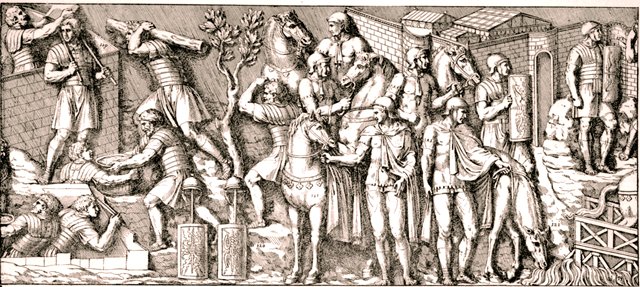 The Lion of St. Mark; a story of Venice in the fourteenth century
The Lion of St. Mark; a story of Venice in the fourteenth centuryRead Online
(156 MB)PDF
(~432 pg)EPUB (beta)
(~432 pg)Daisy (beta)
(689 KB)Full Text
(8.50 MB)DjVu
MY DEAR LADS,
Of all the chapters of history there are few more interesting or wonderful
than that which tells the story of the rise and progress of Venice. Built upon a
few sandy islands in a shallow lagoon, and originally founded by fugitives from the
mainland, Venice became one of the greatest and most respected powers of Europe.
She was mistress of the sea ; conquered and ruled over a considerable territory bordering
on the Adriatic; checked the rising power of the Turks ; conquered Constantinople;
successfully defied all the attacks of her jealous rivals to shake her power; and carried on
a trade relatively as great as that of England in the present day. I have laid my story in the
time not of the triumphs of Venice, but of her hardest struggle for existence
when she defended herself successfully against the coalition of Hungary, Padua, and Genoa
for never at any time were the virtues of Venice, her steadfastness, her patriotism, and her
willingness to make all sacrifice for her independence more brilliantly shown. The historical portion
of the story is drawn from Hazlitt's History of the Republic of Venice, and with it I have woven
the adventures of an English boy endowed with a full share of that energy and pluck which,
more than any other qualities, have made the British empire the greatest the world ever saw.
Yours sincerely,
G. A. HENTY.About the Winged Lion of Saint Mark
The winged lion is the symbol of St. Mark, the patron saint of Venice.
St. Mark is associated with the lion because he described the voice of
John the Baptist as sounding like a roaring lion. The lion symbol was
later depicted with wings because of a vision in which Ezekial saw four
winged creatures "And every one had four faces: the first face was the face of a cherub,
and the second face was the face of a man, and the third the face of a
lion, and the fourth the face of an eagle." Ezekiel 10:14.
These creatures came to be associated with the four evangelists
(Matthew=man, Mark=lion, Luke=ox, John=eagle).
Mark is traditionally represented by the Lion for a couple of reasons, or
these are a couple of reasons given for the representation. The first
associated with it is that Mark starts with John the Baptist "crying out
in the wilderness" the association has been made by some between that
voice of John and the roar of the lion which cries out of the wilderness.
The wings on all of the symbols of the gospels are to symbolize their
connection to the divine, like eagles wings or angels (who were the messengers
of God) they deliver this story and good news.Matthew is portrayed
as the man because many believe we get a picture of Jesus living with us and as
one of us in Matthew. John is portrayed as the Eagle and to read John the
reason if fairly self evident. John is the ethereal gospel where we get
the long prayers of Jesus, and we see Jesus portrayed more in his divinity and
carrying out his divine purpose. Luke is portrayed as a bull. Luke's
gospel, as he says in the beginning, is to put down a most orderly account.

















